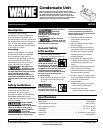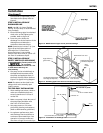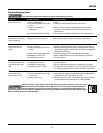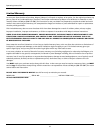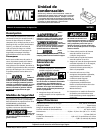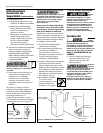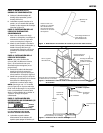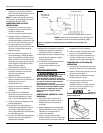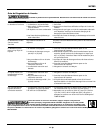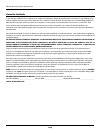
Operating Instructions
4
for efficient operation.
5. Avoid overtightening of check valve
after cleaning. (Refer to
Maintenance gudelines.)
6. Use constant voltage power source.
Do not plug into a device that runs
intermittently.
7. Locate model number and date
code on pump and take note of
them.
8. To assure proper performance, the
highest point of discharge line
should be higher than 5’ off the
floor.
9. Clean any debris in the pump
reservoir if necessary.
10. Do not handle the pump until you
have disconnected it from the
power source. Follow all guidelines
for electrical safety discussed in
General Safety.
11. Do not use a pump discharge pipe
smaller than the pump discharge
size.
12. After installation, test pump to
make sure that system is working
properly.
13. Make sure that installation
conforms to all local and national
codes.
14. Local codes may require the use of a
condensate neutralizer when using
this pump.
Figure 7 - Typical wiring diagram for pumps provided with safety switch
NOTE: The alarm can be wired into the safety
switch at the normally open (“NO”) contact.
Maintenance
Make certain that
the pump is
unplugged before attempting to
service or remove any component. This
pump is assembled in the factory using
special equipment; therefore only
authorized service dealers or qualified
electricians should attempt to repair
this unit. Improper repair can cause an
electrical shock hazard.
CLEANING RESERVOIR AND
IMPELLER
1. Unscrew two screws through
mounting brackets, and remove
pump from wall, if mounted.
2. Remove reservoir from deck by
unscrewing the four screws located
at the corners of the reservoir cover.
3. Remove the impeller cover by
unscrewing the five screws on the
underside of the motor. Pull out the
impeller shaft assembly.
4. Use a damp cloth to wipe off the
gasket and the motor assembly.
5. Reassemble impeller to motor. Then
reassemble reservoir to reservoir
cover.
CLEANING CHECK VALVE
1. Disconnect discharge line from
check valve (see Figure 8).
2. Remove check valve with 9/16”
wrench.
3. Visually check for obstructions or
damage.
4. If check valve is not damaged,
replace valve by hand-tightening.
Then tighten 1/2” turn with 9/16”
wrench.
Do not overtighten.
Damage to O-ring
seal may occur.
Typical Thermostat
Typical Thermostat Connections of Appliance
Overflow
Safety Switch
check valve
Figure 8 - Check valve



